This Mumbai Artist Creates Life-Sized Sculptures From Waste — While Empowering Rural Women Through Art
In a world that often discards more than it keeps, finding beauty in waste can feel like an act of quiet rebellion. Every day, tonnes of cardboard boxes — used once, forgotten quickly — end up in landfills across cities. But in a small studio in Vasai, Maharashtra, something different is taking shape. Here, what’s thrown away is given a second life, shaped by hands that see possibility where others see scrap.
At the centre of it all is Bandana Jain, an artist, a storyteller, and someone deeply committed to sustainability.
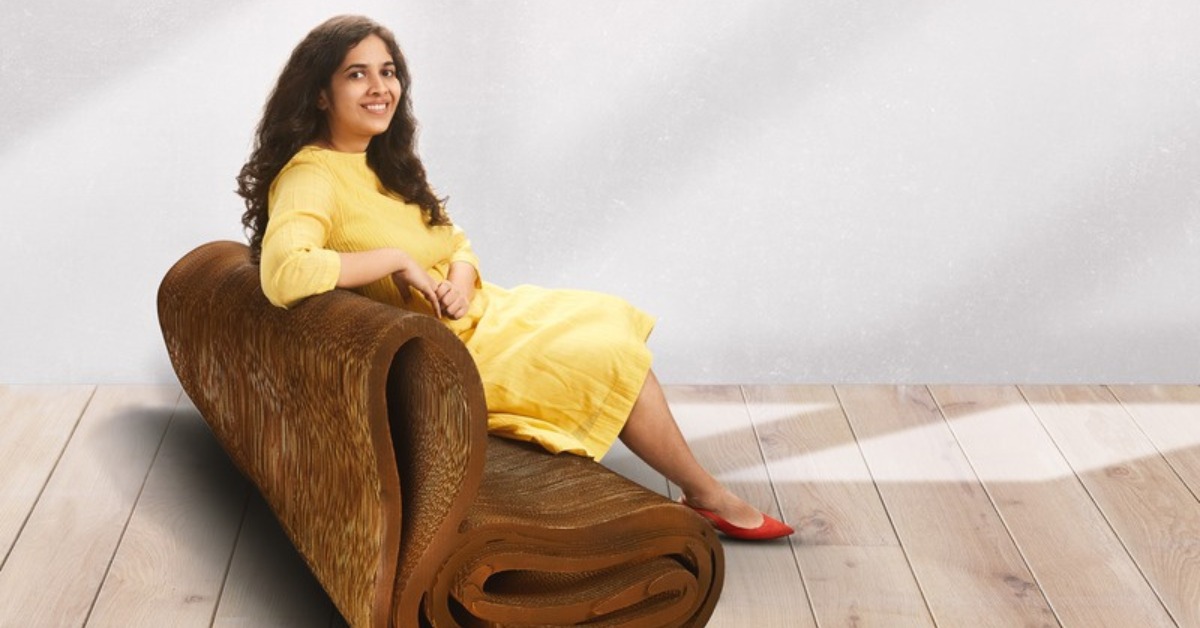 Bandana Jain creates functional, full-scale installations from discarded cardboard, merging art with everyday sustainability.
Bandana Jain creates functional, full-scale installations from discarded cardboard, merging art with everyday sustainability.
Bandana’s studio hums with quiet energy. Inside, discarded cardboard boxes are transformed into life-sized sculptures, their folds and layers speaking of resilience and reinvention. Walk into the sun-dappled space, and it feels almost like stepping into a conversation — one where waste is not the end, but the beginning of something meaningful.
Bandana’s journey with cardboard began in 2013, born from a desire to break away from conventional art materials. “I felt that I had worked with wood and other mediums, but the market was looking for something different,” she recalls. But this shift was about more than standing out. “If I worked with cartons and recycled or upcycled them, I thought it would give me an avenue to talk about sustainability.”
Her art plays with texture and form, drawing the eye in. “My work is like folds of fabric,” she explains. “It looks very soft, but when you come closer and touch it, you feel a really hard material.”
 Inspired by the folds of fabric from her childhood, Bandana’s sculptures bring softness and movement to rigid cardboard.
Inspired by the folds of fabric from her childhood, Bandana’s sculptures bring softness and movement to rigid cardboard.
The influence of fabric runs deeper than surface inspiration. “I feel that fabric, with its folds going up and down, light and dark, shows light in a way that reflects life itself. You see the ups and downs in life too, and that’s just a part of it,” she says, connecting her sculptural language to lived experience.
A childhood rooted in nature
Bandana’s artistic leanings trace back to the village of Thakurganj in Bihar, where she grew up surrounded by the gentle rhythms of nature. “I always loved nature, and it was always inside me that I wanted to become an artist,” she says.
Raised in a joint family of nearly 40 people, her childhood was steeped in simplicity, community, and resourcefulness. “I was born and brought up in a joint family. There were 30–40 people in my family. It was such a wonderful experience to have that sort of life,” she recalls.
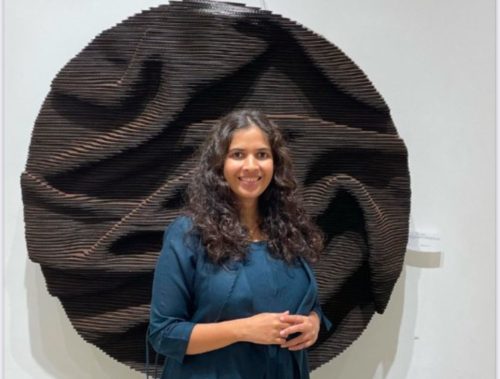 Raised in rural Bihar, Bandana Jain’s connection to nature and minimalism continues to inform her creative philosophy.
Raised in rural Bihar, Bandana Jain’s connection to nature and minimalism continues to inform her creative philosophy.
Lessons in sustainability were woven into daily life. “My mother taught me to stay close to nature and value it. We were taught earlier on the value of little things, like the importance of water. Minimalism was her approach, and my childhood memory pushes me to believe that a minimalistic lifestyle is the best lifestyle, and sustainability is the key to a better future,” she shares.
Even without formal supplies, Bandana’s creativity thrived. She loved sketching enlarged versions of small images — often birds or everyday scenes. “I always like to make a bigger version of what I see,” she says. “So if I see a 2×2 inch or 1×1 inch picture of a bird, I like to make it in maybe 10×10, 20×20 inch or maybe more than that.”
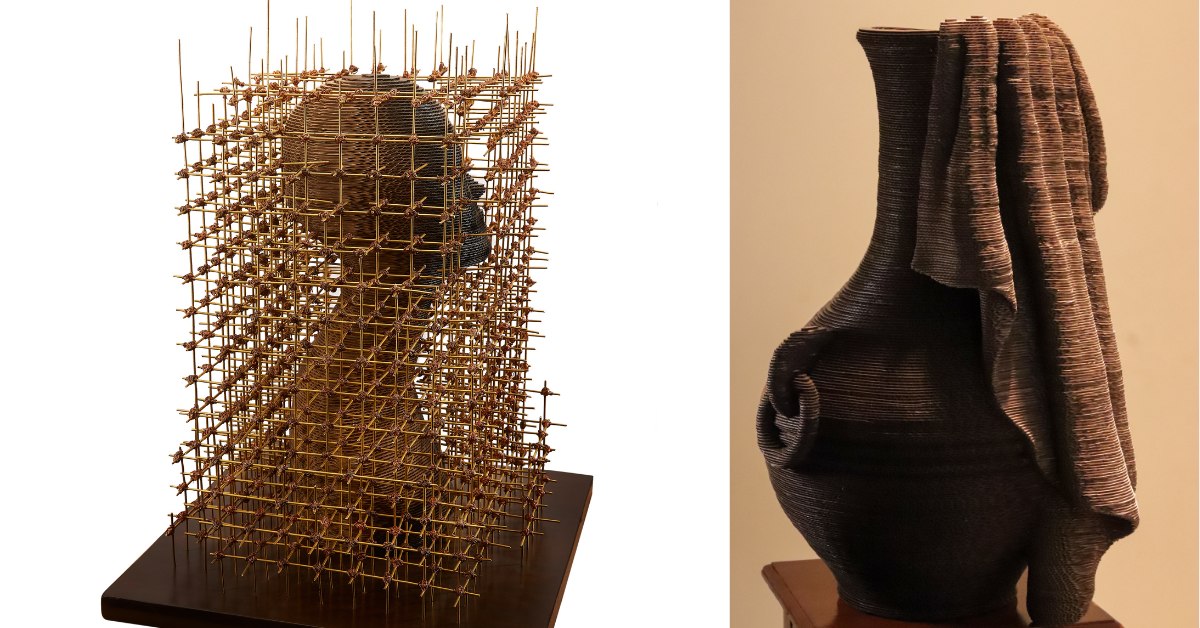 Working with recycled cardboard, Bandana Jain crafts sculptures that reflect both the delicate flow of textiles and the rigid structures that define human life.
Working with recycled cardboard, Bandana Jain crafts sculptures that reflect both the delicate flow of textiles and the rigid structures that define human life.
Capturing the subtle gestures and postures of family members also fascinated her. “I used to capture those characteristics through sketches, and that’s what I think was the beginning of my journey,” she explains.
Her room soon turned into her first “gallery”, walls covered in posters and drawings — a quiet declaration of her growing artistic instinct.
A tragedy, and a turning point
In 2002, just as she was preparing to move to Delhi to study interior design, life shifted. Her mother passed away — a devastating loss that altered everything.
“We were about to move to Delhi. I had planned to stay there and pursue interior design. I had convinced my mother, and she agreed. And I was relying on her completely for this,” Bandana says. “So when my mother passed away, my whole world changed. Suddenly, it was like I had to take care of the kitchen and other things… I was kind of filling her role,” she adds.
Despite the responsibilities that followed, the desire to create never faded.
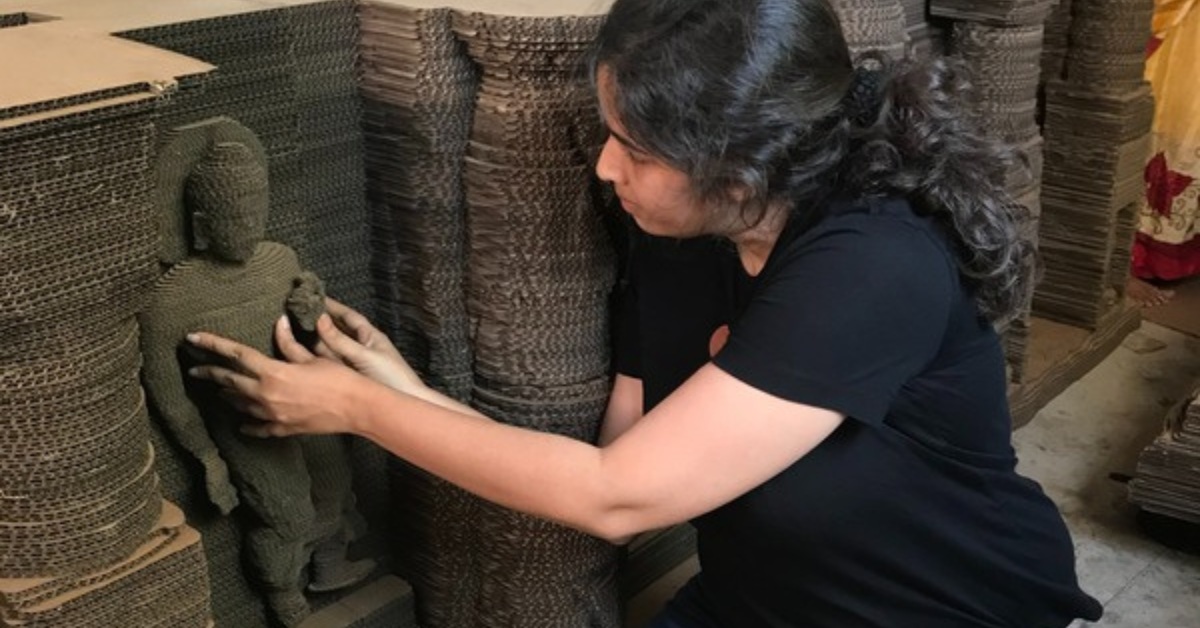 A discarded carton lying on campus first sparked Bandana’s deep artistic relationship with upcycled materials.
A discarded carton lying on campus first sparked Bandana’s deep artistic relationship with upcycled materials.
In 2008, her marriage brought her to Mumbai — a move that reopened the door to her dream. She enrolled at the prestigious JJ School of Art, finally stepping into the formal world of artistic exploration.
It was during her college years that a simple, overlooked object caught her eye. One day, walking across campus, she noticed a piece of discarded cardboard. “I just saw it and fell in love with it,” she says. That accidental discovery planted a seed — the idea that something humble and forgotten could hold limitless possibilities.
Later, Bandana travelled to Switzerland and the Netherlands, where she saw first-hand how seriously waste segregation and sustainability were treated. “In both these countries, waste segregation and sustainability were top priorities. When I returned to Mumbai, I felt like the environment had taken a backseat here. That was the turning point of my career,” she shares.
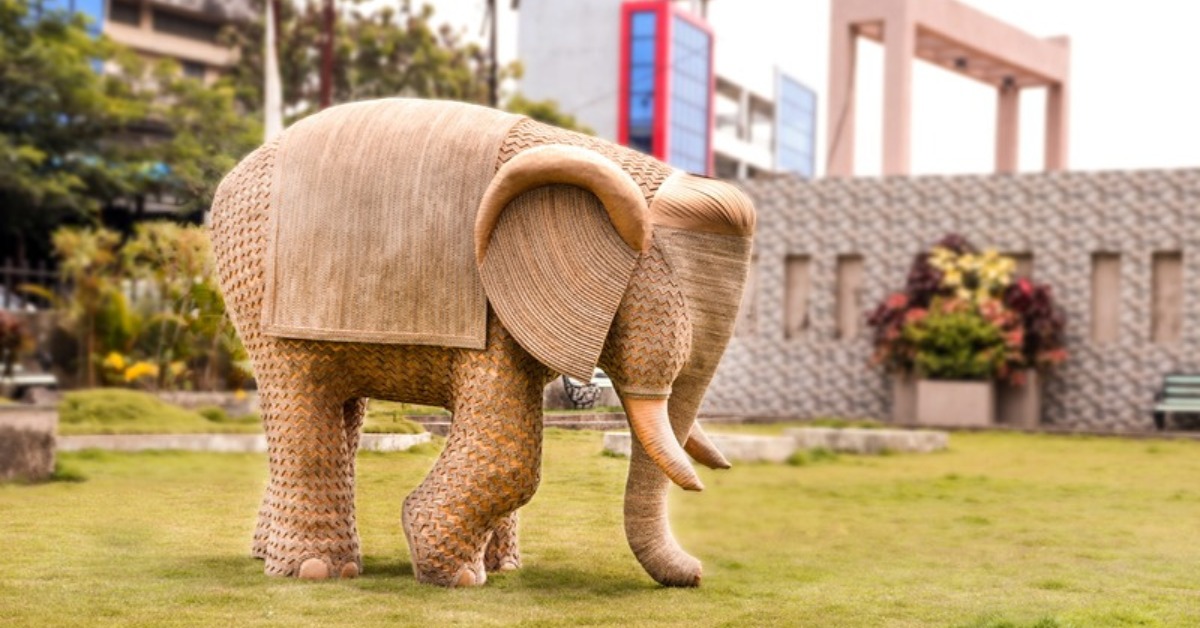 Works like ‘Gaja’ fuse Indian traditional motifs with eco-conscious practices using layers of recycled cardboard.
Works like ‘Gaja’ fuse Indian traditional motifs with eco-conscious practices using layers of recycled cardboard.
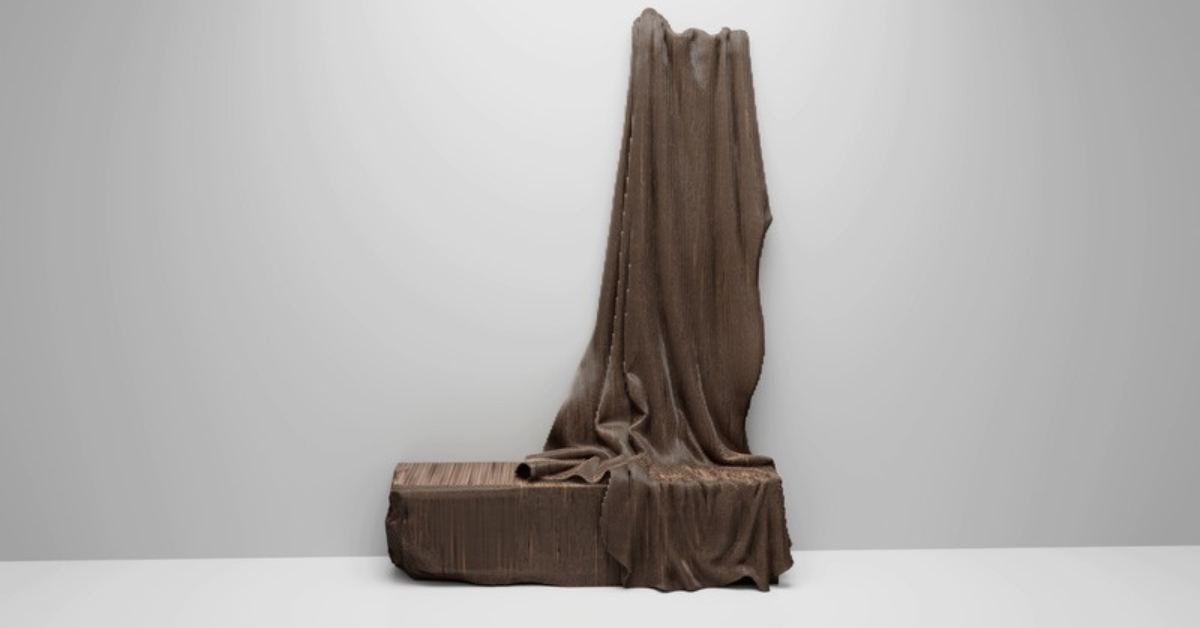 Installations like ‘Whispering Drape’ reinterpret everyday waste into flowing, fabric-like visual statements.
Installations like ‘Whispering Drape’ reinterpret everyday waste into flowing, fabric-like visual statements.
This growing awareness fuelled a deeper purpose. Art, she realised, could be a way to start conversations without sounding preachy. “If you go directly and talk about it, it looks like gyan,” she laughs, referring to the Hindi word for unsolicited advice. “But when it comes to art, it’s so subtle that people perceive it in a bigger way.”
Her recent work, The Force Within, captures this philosophy. A life-sized installation crafted entirely from recycled materials, it represents strength, sustainability, and the resilience of Mumbai, and was showcased at the Kala Ghoda Art Festival 2025.
Imagine walking into her Vasai studio: the sculptures rise up from the floor, fashioned not from stone or metal, but from the boxes we toss out every day. It’s like the space is whispering, gently but firmly — Look closer. We can do better.
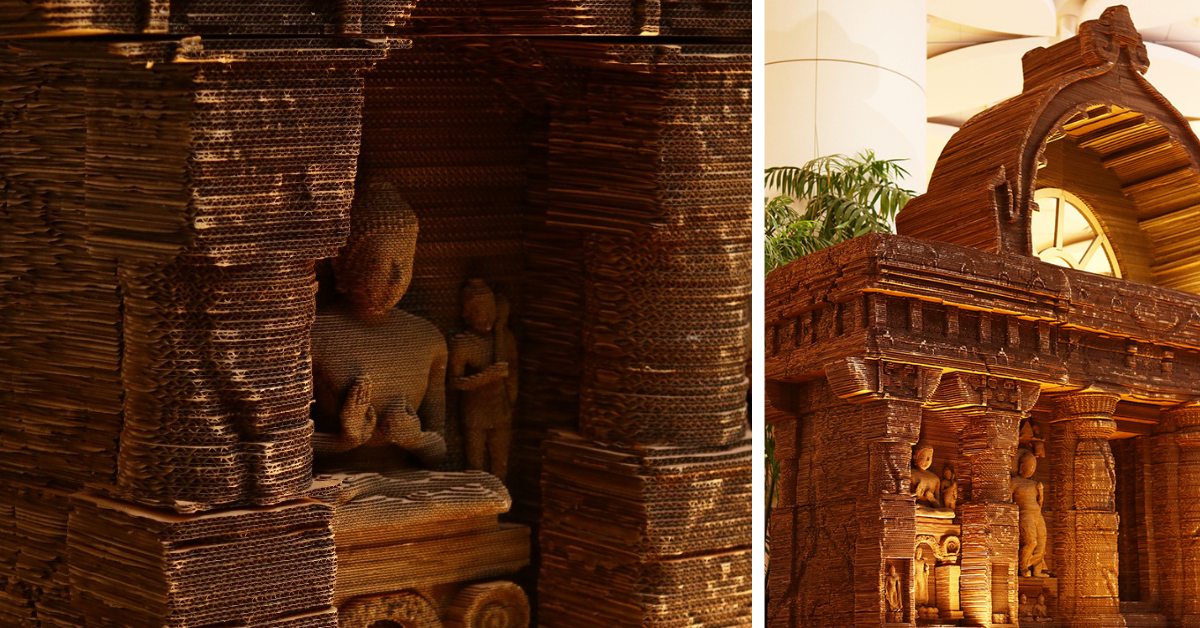 Bandana’s large-scale recreations, such as the Ajanta Caves, showcase the potential of recycled materials in preserving India’s heritage through art.
Bandana’s large-scale recreations, such as the Ajanta Caves, showcase the potential of recycled materials in preserving India’s heritage through art.
Building a studio that empowers
Today, Bandana’s studio is not just a place for sculpture — it’s also a space for learning, skill-building, and change.
At her Vasai workshop, four women work on a regular basis. Additional team members are brought in depending on the scale of projects, allowing the studio to grow based on the needs of each creation.
Recognising the economic challenges faced by women in the surrounding rural areas, she recruits and trains them in the techniques of cardboard artistry. The initiative not only provides sustainable employment but also fosters independence and pride.
More than that, the studio has become a place of shared learning and collective creation, where women exchange skills, support each other, and shape not just the artwork, but their own futures.
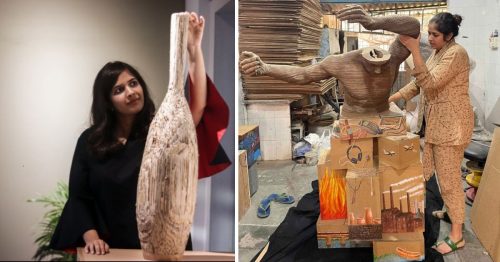 From delicate explorations of form to powerful reflections on society, Bandana’s cardboard sculptures capture the depth, resilience, and beauty hidden in everyday materials.
From delicate explorations of form to powerful reflections on society, Bandana’s cardboard sculptures capture the depth, resilience, and beauty hidden in everyday materials.
“For the last two years, I’ve been working here. It has given me financial independence. Today, I don’t have to depend on anybody for my income,” says Shubhangi Hanamgar, one of the women Bandana mentors. “I love shopping, and having my own income allows me to buy the goods I want,” she smiles.
Each sculpture shaped in the studio carries not just artistic effort, but the hopes and futures of the women behind it. It is not about grand transformations overnight, but about steady steps — fold by fold, skill by skill.
 Bandana’s Vasai studio is a creative and collaborative space where rural women learn cardboard artistry and financial independence.
Bandana’s Vasai studio is a creative and collaborative space where rural women learn cardboard artistry and financial independence.
Bandana’s journey is a reminder that sustainability isn’t just about reusing materials. It’s about reimagining value — in objects, in art, and most importantly, in people. In her hands, cardboard becomes more than a discarded box. It becomes a beginning.
Written by Arunava Banerjee, Edited by Khushi Arora; All images courtesy Bandana Jain’s team
News